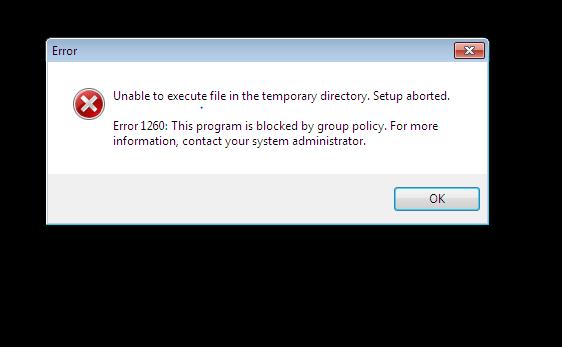

- #Malwarebytes manual update where do the files go how to
- #Malwarebytes manual update where do the files go software
- #Malwarebytes manual update where do the files go download
- #Malwarebytes manual update where do the files go windows
However, if the CPU usage still persists, then the issue may be with Malwarebytes itself rather than the antivirus.
#Malwarebytes manual update where do the files go windows
If the CPU usage is fixed, you may want to switch to Windows Defender or a different antivirus.
Once it’s uninstalled, restart your PC. Select the antivirus from the list, press Remove / Uninstall, and follow the on-screen instructions.  Press Win + R, type appwiz.cpl, and press Enter. Here’s how you can do the same on Windows:
Press Win + R, type appwiz.cpl, and press Enter. Here’s how you can do the same on Windows: 
Some users reported that adding Malwarebytes to the exclusion list wasn’t sufficient, and they had to remove the antivirus entirely.
 If the CPU usage issue persists, add the following items as well:Ĭ:\Windows\System32\drivers\mbamswissarmy.sysĬ:\Windows\System32\drivers\mbamchameleon.sysĬ:\Windows\System32\drivers\mbae64.sys (Only present on 64-bit machines.)Ĭ:\Windows\System32\drivers\mbae.sys (Only present on 32-bit machines.). Add the following folders to the exclusion list:. Look for the Manage Exclusions or similar option and press Add:. Launch the Antivirus and open Settings. As such, you can try adding Malwarebytes to the antivirus exclusion list with the following steps: This antivirus conflict could be what’s leading to the high CPU usage. If you’re using a third-party antivirus alongside Malwarebytes, it’s possible that the antivirus is misinterpreting Malwarebytes as a threat. Do note that the scan will take a bit longer to complete with these settings. In the CPU Usage section, set the CPU usage to Low or Medium. Launch Malwarebytes and go to Settings > Advanced. If you’re facing high CPU usage during a manual or scheduled scan, the following steps should be helpful: Malwarebytes also allows you control the CPU usage when scanning. As this is only a temporary fix, you should apply the solutions listed below to fix the issue at its root. If the CPU usage is excessively high, you can end the Malwarebytes Service via the Task Manager.
If the CPU usage issue persists, add the following items as well:Ĭ:\Windows\System32\drivers\mbamswissarmy.sysĬ:\Windows\System32\drivers\mbamchameleon.sysĬ:\Windows\System32\drivers\mbae64.sys (Only present on 64-bit machines.)Ĭ:\Windows\System32\drivers\mbae.sys (Only present on 32-bit machines.). Add the following folders to the exclusion list:. Look for the Manage Exclusions or similar option and press Add:. Launch the Antivirus and open Settings. As such, you can try adding Malwarebytes to the antivirus exclusion list with the following steps: This antivirus conflict could be what’s leading to the high CPU usage. If you’re using a third-party antivirus alongside Malwarebytes, it’s possible that the antivirus is misinterpreting Malwarebytes as a threat. Do note that the scan will take a bit longer to complete with these settings. In the CPU Usage section, set the CPU usage to Low or Medium. Launch Malwarebytes and go to Settings > Advanced. If you’re facing high CPU usage during a manual or scheduled scan, the following steps should be helpful: Malwarebytes also allows you control the CPU usage when scanning. As this is only a temporary fix, you should apply the solutions listed below to fix the issue at its root. If the CPU usage is excessively high, you can end the Malwarebytes Service via the Task Manager. #Malwarebytes manual update where do the files go how to
How to Fix Malwarebytes Service High CPU Usage? User should exercise caution any time they are asked to enter sensitive personal information online.The CPU usage issue occurs due to faults with the Malwarebytes version on your system, Generally, this means misconfigured settings, buggy Malwarebytes version, or antivirus conflicts.
#Malwarebytes manual update where do the files go software
Note: Apple provides security updates for the Mac exclusively through Software Update and the Apple Support Downloads site.
#Malwarebytes manual update where do the files go download
Use the steps in the “How to avoid installing this malware” section above to remove the installer from the download location.
Select the name of the app you removed in the steps above ex. Open System Preferences, select Accounts, then Login Items. Removal of the login item is not necessary, but you can remove it by following the steps below. Malware also installs a login item in your account in System Preferences. MacDefender, MacSecurity, MacProtector or other name. Click the Quit Process button in the upper left corner of the window and select Quit. Under the Process Name column, look for the name of the app and click to select it common app names include: MacDefender, MacSecurity or MacProtector. Choose All Processes from the pop up menu in the upper right corner of the window. Go to the Utilities folder in the Applications folder and launch Activity Monitor. Do not provide your credit card information under any circumstances. If the malware has been installed, we recommend the following actions: Go into the Downloads folder, or your preferred download location. Delete the installer immediately using the steps below. If this happens, cancel the installation process do not enter your administrator password. In some cases, your browser may automatically download and launch the installer for this malicious software. If a normal attempt at quitting the browser doesn’t work, then Force Quit the browser. If any notifications about viruses or security software appear, quit Safari or any other browser that you are using.








 0 kommentar(er)
0 kommentar(er)
